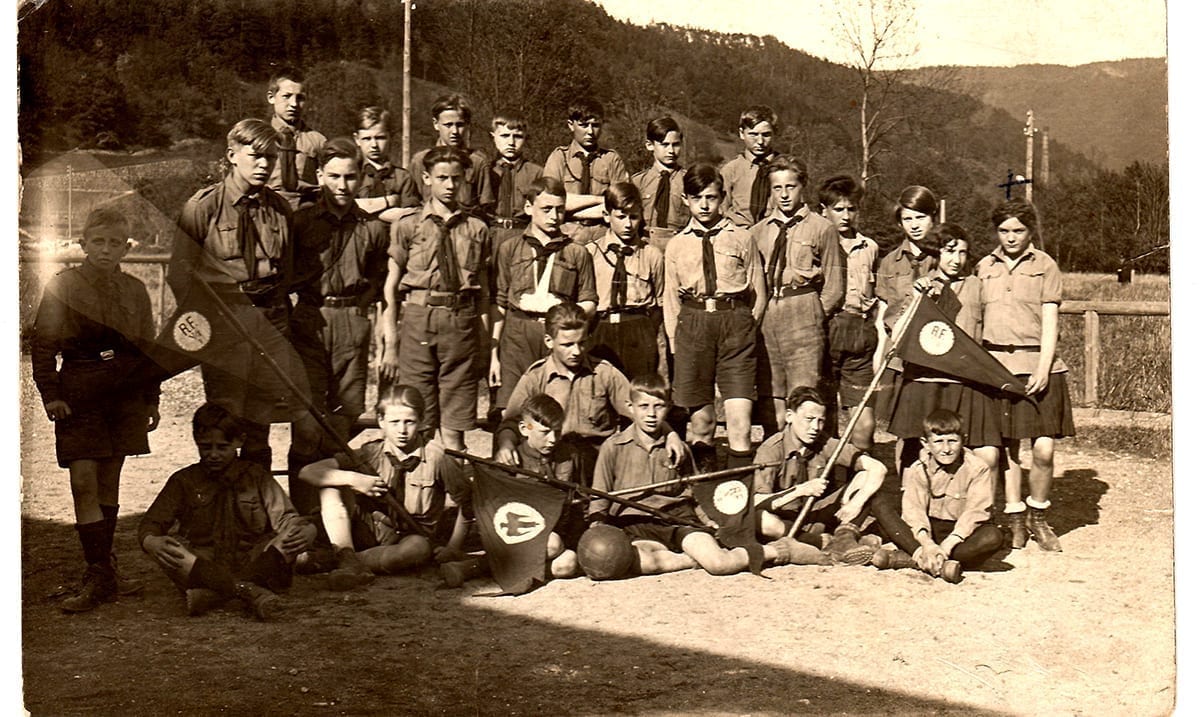When Hitler was in power, he tried hard to push his ideas into the minds of the young and while a lot of them gave in, some of them did not. The Edelweiss Pirates were a loosely organized group of youth in Nazi Germany who seemingly ‘fought’ against Hitler.
These youths were not willing to conform to the things Hitler wanted them to and so they formed together in several youth movements and were willing to express themselves even when it was not ideal. While they had to be careful, they did their best to remain as ‘free’ as they could. I know, that might not sound like much but to these youths it was everything.
History Learning Site wrote as follows on these ‘pirates’:
They also offered a way of life outside of the strangulating Nazi regime. Members of the Edelweiss Pirates defied restrictions on movement by going on hiking and camping trips. While on these trips they would have enough freedom to sing songs banned by the Nazis – mainly ‘degenerate’ blues or jazz songs that had filtered over from France. They could have open discussions on topics the likes of which would have been forbidden in the cities and which informants would almost certainly have overheard.
Between 1936 and September 1939, the Nazi authorities saw the Edelweiss Pirates as little more than a small-scale irritant. However, attitudes changed during World War Two when the authorities believed that the Edelweiss Pirates were responsible for collecting British anti-Nazi propaganda leaflets dropped by Bomber Command at the start of the war and posting them through letterboxes. This was seen as being more than just an irritation; it was classed as blatant subversion.
In July 1943, Nazi Party leaders in Dusseldorf contacted the Gestapo with their views on a local Edelweiss group. The letter stated that the “gang” was “throwing its weight around” and that the “riff-raff” represented a “danger to other young people”. It claimed that this particular city group had an age range from 12 to 17 and that members of the army associated with them when they were on leave. The Dusseldorf city leaders also believed that the local Edelweiss group was responsible for anti-Hitler and anti-war graffiti in the city’s pedestrian subways. However, it is clearly stated that these were only suspicions.
Even then, punishment for those caught was not as drastic as might have been thought given Nazi Germany’s treatment of adult subversives. The authorities knew that members of the Edelweiss Pirates prided themselves on their appearance in the sense that it was very much non-militaristic. A standard punishment for anyone caught was to have their heads shaved so that their more bohemian appearance changed to an army/prison one. However, the activities of the Pirates did not endear themselves to Heinrich Himmler who required all Germans to be totally obedient. He ordered a crackdown on all youths who seemed to be failing in their total loyalty to Hitler and the Nazi state.
In a letter from Himmler to Reinhard Heydrich (January 1942) the head of the SS wrote that a half-measured approach to any youth groups that failed to show total loyalty was unacceptable and that members of any such groups had to be dealt with accordingly. Himmler told Heydrich that labor and work camps were inappropriate. They had to be sent to concentration camps for between “2 to 3 years”. Himmler did not differentiate between male youths and “worthless girls”.
The SS was concerned with these defiant youths because they thought that they were a ‘bad example.’ They were worried that these youths would influence others who were already conforming to turn the opposite way. That being said many of them met the things they faced with more of a violent response fighting with those who did conform and graffiting buildings as best they could.
According to History Daily, some of their anti-nazi activities were as follows:
Increasingly, the teen members of the Edelweiss Pirates engaged in acts of rebellion against the Nazi Party and the Hitler Youth, though much of their activities were shrouded in secrecy. Members spray painted anti-Hitler messages on walls and buildings, threw bricks through munition factory windows, and even dumped sugar into the gas tanks of Nazi cars. They tuned into BBC radio broadcasts even though it was forbidden and gathered up the anti-Nazi leaflets that the Allies forces dropped, which they disseminated in surrounding towns.
As World War II progressed, the Edelweiss Pirates engaged in riskier activities. They supplied resistance groups with munitions and explosives that they obtained by stealing, and they hid Jews, German deserters, escaped labor camp prisoners, and people who had escaped concentration camps. The teens took turns sneaking food and supplies to a network of hidden fugitives, knowing that they would face brutal punishment if caught.
Membership in the Edelweiss Pirates was far from a bit of harmless rebellion. Much of the activities that the teens in the Edelweiss Pirates engaged in was illegal, and depending upon the crime, the punishment could be severe. Some members were humiliated with public head-shaving, while others were sent to prison or labor camps. Many were tortured and beaten, and some were even publicly executed for their activities despite their youth. Still, the Edelweiss Pirates remained mostly undeterred. They were committed to weakening the Nazi control over Germany, even if it meant sacrificing their dignity, freedom, and sometimes, their lives.
To learn more about these amazing youths take a look at the video below. While they might not have been talked about much, they were important. It really goes to show that there will be people willing to reach in the opposite direction no matter what is going on before them.

